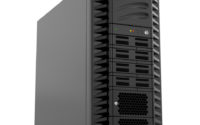What Are Your Options for Dealing With Post-Warranty Hardware?
While your hardware is covered under warranty, you can rest assured that any issues that arise will be addressed by the original manufacturer. When that warranty ends, you’ll incur higher costs to make repairs. And if the manufacturer stops supporting the hardware altogether, you’ll need to find an alternative plan for maintenance.
What are your options for dealing with post-warranty hardware?
The Value of Working With a Third-Party Partner
Maintaining your post-warranty IBM hardware and other types of hardware is much easier and more cost effective when working with a third-party partner, rather than relying on internal resources. You won’t have access to support from original manufacturers anymore (in most cases), so working with a third party is the next best thing.
Advantages of this arrangement include:
- Reliable service. Enlisting the services of a third party gives you access to reliable service from skilled technicians. If you have any issues with your hardware, you can call them immediately and get over the phone support. If this doesn’t resolve your issue, they may dispatch a technician to your physical location, and do so within a matter of hours.
- Cost savings. In many cases, working with a third party is cheaper than any other alternative. You won’t have to hire more in-house, full-time workers, and you won’t have to depend exclusively on OEMs. You can also delay purchasing new equipment, keeping your existing infrastructure running longer.
- Access to experts. Some people like working with third-party IT support partners because they get access to seasoned experts who can provide them with direction and advice. If you’re not sure about what the best approach for your old hardware is, or if you’re making plans to expand your IT infrastructure in the near future, you can consult with them.
- 24/7 availability. Many third parties offer 24/7 availability, so if a critical component of your infrastructure goes down, you’ll have someone you can count on to address the issue.
Hardware End of Life
The end of a hardware’s functional life is often described using many different terms.
For example, end of life, or EOL, usually means the original equipment manufacturer (OEM) will no longer sell, market, or update your equipment. OEMs will proactively announce EOL for their products, and once the date arrives, there will be no more patches, firmware updates, or upgrades available. However, the OEM may offer some post-warranty support.
End of development, or EOD, means that the OEM is ending the production of a piece of equipment’s operating system. When this happens, software updates and patches will no longer be released. Limited post-warranty support may or may not be available.
End of service life, or EOSL, means the OEM is essentially cutting all ties with this piece of equipment. The OEM will no longer sell, provide updates, renew contracts, or offer services for these pieces of equipment. You’ll be on your own.
Options
Ultimately, your options for dealing with hardware after the warranty has expired are the following:
- Purchase an extended warranty. If the OEM is still offering service or support for this type of hardware, you may be able to purchase an extended warranty. This is an investment that allows you to maintain the same or similar service coverage as you had before, effectively guaranteeing the functionality and continuity of your equipment. However, as your equipment gets older, the OEM may no longer offer extended warranties, which means you’ll need to come up with an alternative plan.
- Work with a third party. The best option is often working with a third party who offers support for the hardware in question. As we’ve already covered, these reliable experts remain on call 24/7 in most cases, offering both phone and in-person support as needed. They can keep most of your equipment running far beyond EOSL.
- Maintain and replace yourself. Another option is to maintain and replace your equipment using only your internal team and internal resources. After EOSL, manufacturers may still have replacement parts for sale, though they’ll likely be sold for a premium. If you’re willing to do the maintenance work, and spend a little extra money, you can keep your equipment running a bit longer.
- Decommission. You can also decommission your old equipment and replace it with newer counterparts. In some cases, this becomes an inevitability, as it no longer makes fiscal sense to continue updating your old equipment.
An expired warranty for a piece of hardware doesn’t mean you have to stop using that hardware immediately. Instead, you can rely on a number of different options, such as purchasing an extended warranty or working with a third party, to keep your hardware operational. The best choice depends on your business’s unique position and needs.

